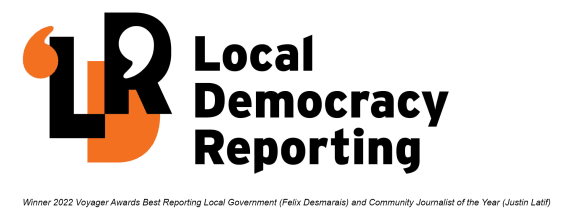
The West Coast Regional Council headquarters at Pāroa is now host to up to 80 staff working in a range of environmental focused services across the entire 650km long West Coast region. Photo: Greymouth Star
The West Coast Regional Council will move on Tuesday to adopt what is projected to be a 27 percent general rates rise under its 2024-34 Long Term Plan - one of the biggest rises compared to other councils around the country.
The increase is based on a 10.5 percent increase in councils' operating expenditure from $22.8 million in the current financial year to $25.2m in 2024-25.
Under council's 2024-34 LTP consultation document the "main drivers" of the proposed rates take increase were:
- Rebuilding council's corporate service functions and to implement new IT systems
- Reviewing council's overarching regional plans
- Progressing the 'one district' Te Tai o Poutini Plan
- Construction of the Westport Flood Protection Project
The Long-term Plan is council's key planning document for the next 10 years.

Photo:
Specifically, it outlines a work programme and the financial implications in detail for the next three years. The remaining seven years broadly outline council's priorities.
Council in April presented to ratepayers its "preferred option" of a 27 percent general rates increase in year one.
This was based on borrowing to "smooth rates increases" to subsidise the budget demand.
The second option was for a 44 percent rates increase where ratepayers would bear the full cost.
The LTP anticipates a 12 percent rates increase in 2025-26, then rates increases by "no more" than 7.5 percent per year for the life of the plan.
However, aside from general rates, ratepayers in each of the 23 special rating districts - which look after individual flood protection assets across the 650km long region - will also be seeing variable annual increases in the special rates they pay individually.

This geographic comparison reflects the challenge of administering such a long geographic area with a population of just over 33,000 in scattered communities with a tiny rating base of about 15,000 units. Photo: LDR / Brendon McMahon
Council began LTP deliberations in April 2023 in meetings with staff and consultants in nearly a dozen closed door workshops.
After it called for submissions in April, it received just 25 voices of interest on the plan's priorities. Of those, six were directly heard during a public hearing on 21 May.
The two key issues identified in the LTP draft were "balancing the budget" and funding the Predatorfree Te Kinga programme at Lake Brunner.
Council also sought specific feedback on other areas.
They included its financial and infrastructure strategies and the transfer of major flood protection assets from district council ownership.
The two assets for transfer are the Greymouth Floodwall and the controversial Havill Wall at Franz Josef.
Following the 21 May submissions hearing, council agreed to go with the preferred 27 percent rates increase option with borrowing.
It also decided in principle to fund Predator Free Te Kinga beyond 2025-26 when the government funding runs out.
This will average about $1 per ratepayer but council will also now investigate other funding models including a trust.
Prior to the May hearing, council received a qualified opinion from the Office of the Auditor General on the LTP consultation document around the risk of not incorporating climate change.
Council took the decision on 21 May to acknowledge that.
A report for council tomorrow notes uncertain economic times as it moves to invest in "several large capital works" in the next few years.
These include the $22.9 million Westport flood scheme, improvements to the existing Greymouth Floodwall, further flood protection for Hokitika, and the ongoing Waiho River flood scheme at Franz Josef.
Council's special meeting agenda notes its ongoing exposure to a range of "unavoidable cost pressures" which mostly are funded by rates.
These included "shifting of costs and responsibilities" from central government to local government including proposed environmental law changes.
LDR is local body journalism co-funded by RNZ and NZ On Air.






